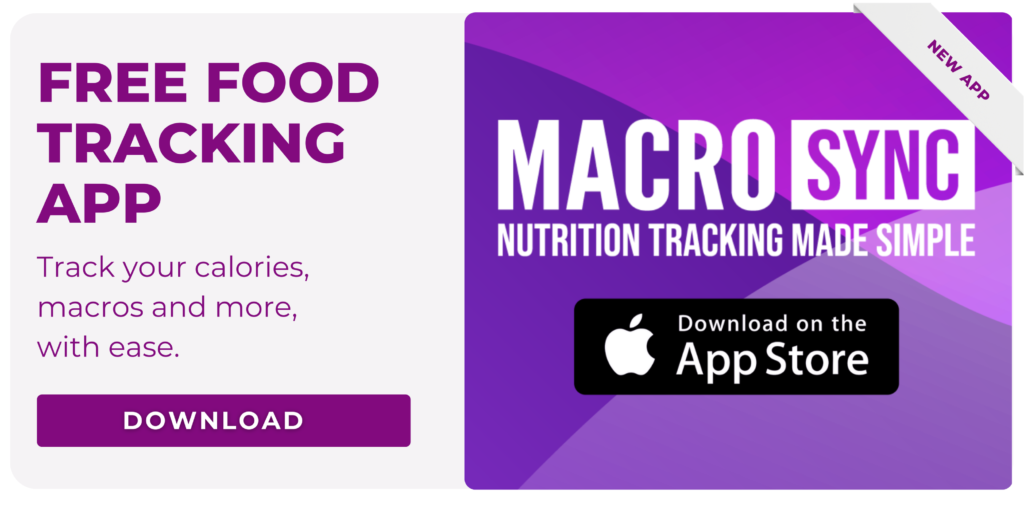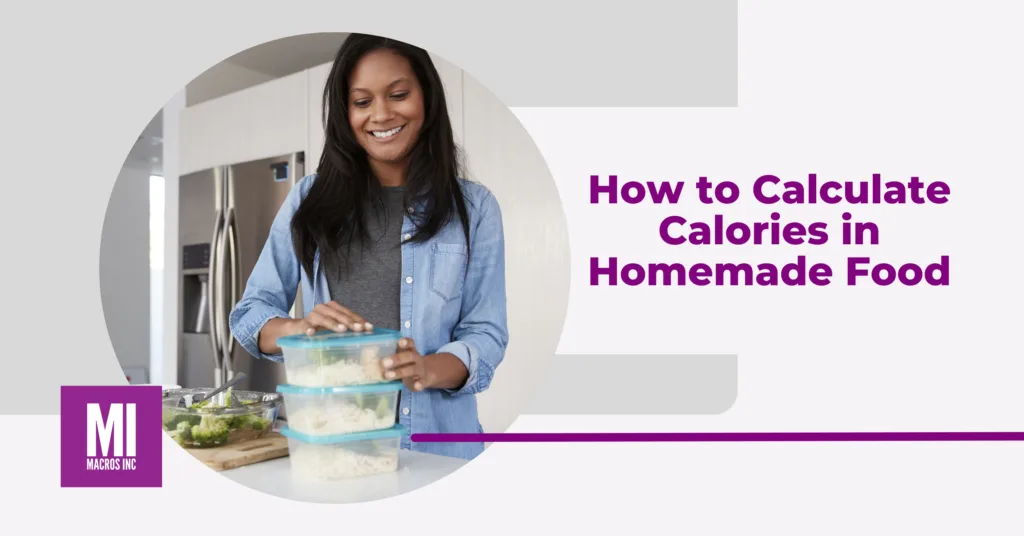This is a walkthrough on how to calculate calories in homemade food, determine the macros, and portion it accordingly. There will be a bit of of math in here, but I promise I’ll keep things as simple as possible. If you have access to a free food tracking app such as Macro Sync, you can bypass many of these calculations altogether, making the process much easier.
The recipe we’ll be using as an example is a hamburger casserole. It has few ingredients, is easy to measure, and portioning is simple. The more complex the recipe is, the more that needs to be accounted for, but the same principles apply.
Jump to a Topic
How to Calculate Calories in Homemade Food
Calculating Ingredients and Recipes
The first step in how to calculate your calories in homemade food is to gather your ingredients and get them portioned out correctly. When measuring out ingredients, the most accurate method is to measure said ingredients in a raw, unprepared state. The reason for this is that weight and thus caloric density changes during the cooking process, particularly in terms of water loss or gain (e.g. meat and rice, respectively). Since most nutrition labels list things in a base, uncooked state, using cooked values can significantly alter the actual numbers in the food.
As for the measurements themselves, weigh solid foods on a scale, and measure liquids with measuring cups. Any measurement unit works here, but grams and milliliters tend to be the most minute and precise. One common pitfall is to weigh solid food in volume, such as peanut butter with a spoon. Depending on just how rounded off the top is, that can be as quite a bit added on. In terms of calories, just an additional 15 grams or so of peanut butter can easily be 100+ extra calories unaccounted for.
Once you have all your ingredients compiled, you can put them together as called for by the recipe. For some folks, measuring out everything ahead of time is easiest, while other prefer measuring some ingredients as they go. As long as everything is tracked correctly, either works. The finished recipe will be a combination of the calories and macros from all the combined ingredients.
The ingredients and final recipe values for our sandwich are laid out below (Table 1). Remember, a tracking app generally makes this much easier than trying to keep all this information by hand.
| Ingredient | Measurement | Calories | Protein (g) | Fat (g) | Carbohydrate (g) |
| Olive Oil | 15ml | 120 | 0 | 14 | 0 |
| Salt | 10g | 0 | 0 | 0 | 0 |
| Fusilli Pasta | 340g | 1200 | 11 | 1.5 | 64 |
| Ground Beef (80/20) | 454g | 1152 | 78 | 91 | 0 |
| Green Bell Pepper | 215g | 56 | 2 | 0.6 | 13 |
| Yellow Onion | 227g | 99 | 3.1 | 0.4 | 23 |
| Garlic | 6g | 9 | 0.4 | 0 | 2 |
| Paprika | 2.5g | 16 | 0.8 | 0.8 | 0.8 |
| Black Pepper | 2.5g | 8 | 0.3 | 0.1 | 1.1 |
| Beef Broth | 473ml | 34 | 5.4 | 0.5 | 0 |
| Tomato Sauce | 425g | 102 | 5.1 | 23 | 1.3 |
| Dijon Mustard | 15g | 15 | 0 | 0 | 0.2 |
| Worcestershire Sauce | 15ml | 20 | 0 | 0 | 3.3 |
| Cream Cheese | 113g | 364 | 7 | 36 | 2 |
| Milk | 118ml | 74 | 4 | 3.9 | 6 |
| Pepper Jack Cheese | 227g | 110 | 6.9 | 8 | 0.2 |
| Green Onions | 60g | 19 | 1.1 | 0.1 | 4.4 |
| Fried Onions | 168g | 270 | 0 | 21 | 18 |
| TOTAL | 2886g | 3668 | 125.1 | 230.9 | 139.3 |

Portioning a Recipe
Once you have your compiled, finished product, it’s time to figure out how to portion it. The simplest option is if it’s something you plan to eat all in one go. Here, you don’t have to do any additional math at all, as everything is being added to your daily totals all at once. Quick and easy.
Of course, most recipes are much larger and involve much larger totals that you’re likely wanting to spread out over multiple meals. This can be handled two separate ways, with one method being quicker, and the other more accurate.
The first method is to eyeball approximately equal sizes for the finished recipe in question. This works best when the finished product is relatively homogenous in nature, and amenable to easy visual portioning. Good examples of these include sandwiches, casseroles, and baked goods. It’s rather easy to cut these into roughly equal fourths, eighths, etc. for each portion, and then divide the total calories and macros by the number of servings to get each portion’s numbers.
The other method is similar to the first, and requires a bit of extra weighing, but is more accurate. Here, you use the total recipe values themselves to dictate the exact size of the servings. To do so, take the total values for the finished recipe, and divide it by how many portions you wish to split it into. From there, you want to weigh each portion to ensure it matches the calculated proportional weight. So, if you’re dividing a finished product into fourths, you’d divide the finished product’s weight by four, then ensure each portion you take is equal to one fourth its weight. This applies to any portion sizes you wish to create (Table 2).
| Portions | Weight (g) | Calories | Protein (g) | Fat (g) | Carbohydrate (g) |
| Full Recipe | 2886 | 3668 | 125.1 | 230.9 | 139.3 |
| 4 | 721.5 | 917 | 31.3 | 57.7 | 34.8 |
| 6 | 481 | 611.3 | 20.9 | 38.5 | 23.2 |
| 8 | 360.8 | 458.5 | 15.6 | 28.9 | 17.4 |
Finally, you can also calculate the calories and macros for a given portion of a recipe without portioning things out ahead of time. Say you cut out a chunk of the casserole without portioning it properly. You can still work out the calories and macros of your meal by weighing it and using proportions. The formula is as follows:
Portion ratio = (Your portion in grams)/(Total recipe weight in grams)
From there, multiply the portion ratio by each of the calorie and macro values to determine the calories and macros of your meal (Table 3).
| Source | Weight (g) | Portion Ratio | Calories | Protein (g) | Fat (g) | Carbohydrate (g) |
| Recipe | 2886 | NA | 3668 | 125.1 | 230.9 | 139.3 |
| Portion | 672 | 0.23 | 843.6 | 28.8 | 53.1 | 32 |
Conclusion
While tracking and portioning recipes can be tricky and a bit imposing, it’s something that becomes increasingly easier with time and practice. When starting out, try to practice on recipes that are simple, require minimal prep, and few ingredients. Sandwiches are a great example of beginner recipes to start with. If you can master tracking recipes, then you can track pretty much anything!
Try our nutrition coaching, for free!
Be the next success story. Over 30,000 have trusted Macros Inc to transform their health.
Simply fill out the form below to start your 14-day risk-free journey. Let's achieve your goals together!

